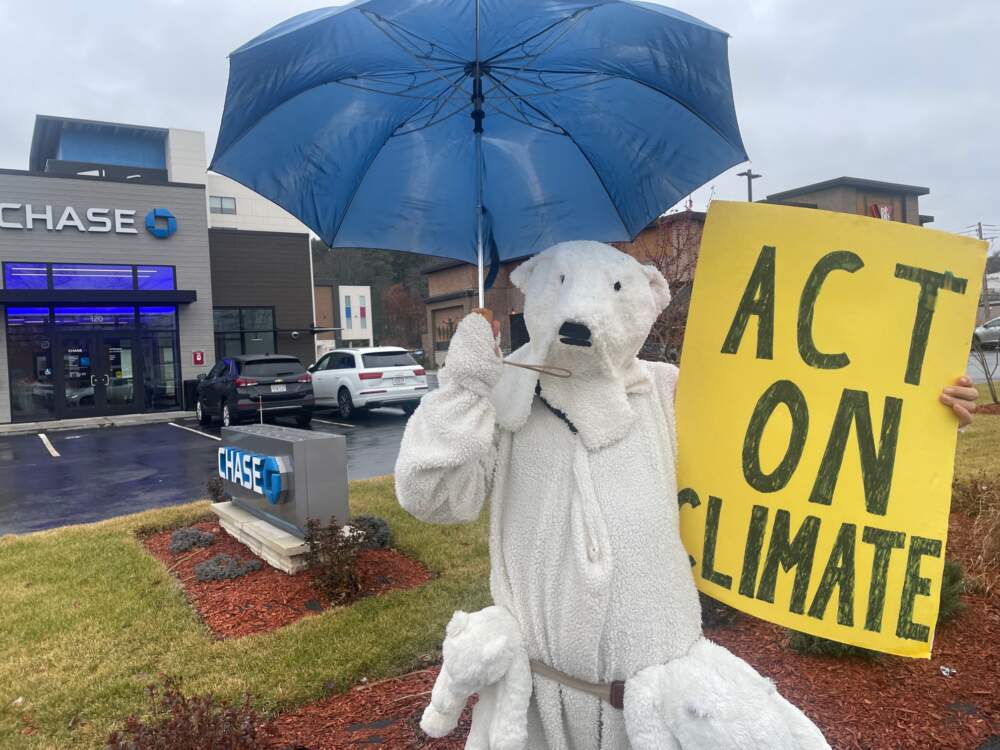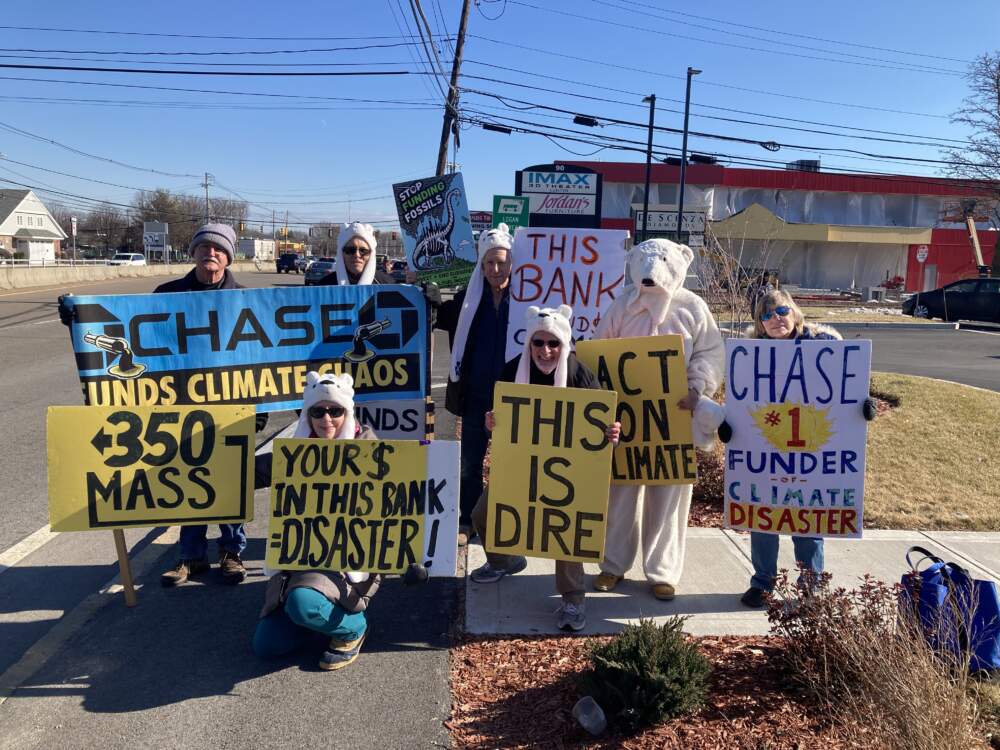Advertisement
Commentary
My ‘polar bear’ approach to the climate crisis

For many months now I’ve been standing on the side of Route 9 in Framingham almost every Saturday morning from 11 a.m. to 12 p.m. in a self-made polar bear costume. I’m out there protesting JP Morgan Chase bank — which has been investing mightily in new fossil fuel exploration — but I actually wear the costume pretty much everywhere. On campus (I teach at Brandeis), in downtown Boston, at marches — I even wore it at a kayaktivist rally with my brother in Berlin.
I call this activity “polarbearing” and I do it, in part, because I know people don’t want to be lectured about climate change. Lots of us know that polar bears will be extinct by the year 2100. And scientists have been telling people for years that the arctic has been warming nearly four times faster than the rest of the globe, which is destroying the polar bear’s habitat. That’s an unbearable fact (pun intended). But the barrage of data doesn’t seem to move many folks to action.
What they want instead is an invitation.
People’s faces light up when they see me standing on the side of the road in my polar bear costume. It makes them smile and grabs their attention. Perhaps it also lowers their defenses. Many give me a thumbs up, and when they have had a chance to read our signs, which we are holding spread out in the style of old Burma Shave ads (signs stacked along the road completing a sentence) — they honk their approval.
Of course, occasionally, someone also gives us the middle finger or shouts something like “get a job” while speeding by, but the majority of people seem curious.
I call this activity “polarbearing” and I do it, in part, because I know people don’t want to be lectured about climate change.
Once an employee of the restaurant next door brought us water. She was worried, she said, seeing me stand there in the polar bear outfit in 90-plus degrees Fahrenheit. My friends worry too sometimes. And I’ve lost count of the number of passersby who come up and say “You must be really hot in there.” No one can actually understand what I’m saying through the bear mask, so I just nod. Yes, it’s too hot. For all of us.
An extinction-themed protest four years ago inspired me to make the costume. I made the head from a template for a paper mask I found on Etsy.com. It meant printing the 20-plus pages of the template and gluing it onto cardboard, before cutting it into dozens of small pieces, then reassembling it according to the instructions. The whole thing took about a day. I got a few yards of “fake fur” at a textile shop, glued some of it over the head and sewed a pair of overalls from the rest. I’ve already had to remake the head once — after several years of climate protests, the thin cardboard gets soggy.
According to Yale Climate Change Communication, the majority of people in the U.S. are either concerned or alarmed about the climate crisis. But even among the alarmed: “Most, however, do not know what they or others can do to solve the problem.”
I understand that the climate crisis is enormous — even overwhelming. But when people say they feel overwhelmed and don’t know what to do, my first question is always: “Have you tried doing anything?”

I hope my polar bear costume also reminds people that they still have a lot more power than an actual polar bear to make a difference. And with that power comes responsibility.
As we stand there on Route 9, I wonder about the conversations we’re starting in the cars driving by. I think about the couple that seems eager to read every sign, the parents and their kids, who seem to get a kick out of the polar bear suit, the lone driver on the phone with a friend.
Will they consider taking action? Do they understand how much power they have, just by making a decision about which bank to use?
But most people have no idea they are supporting climate chaos simply by banking with Chase. And chances are, you have a Chase credit card even if you think you don’t — your Amazon card, or your airline travel card, or even your employer’s business card may be a Chase card. It’s a popular credit card, because it gives back points on travel and makes it easy to build a credit history. The financial behemoth is a regular at college campus orientations, luring students with free water bottles and baseball hats at the start of the semester. Research shows that if they get people young, they are likely to stick around for decades.
But no credit card is more attractive than a livable climate. Asked in another survey, “why they might not punish companies that oppose steps to reduce global warming,” 58% of people said nobody had ever asked them to do so.
OK, people, this is me asking you to do so: Cut up your card. Make your own polar bear suit or come join us! There’s so much we can do. It’s not just about Chase or even about polar bears. But I guess you figured that out by now.
